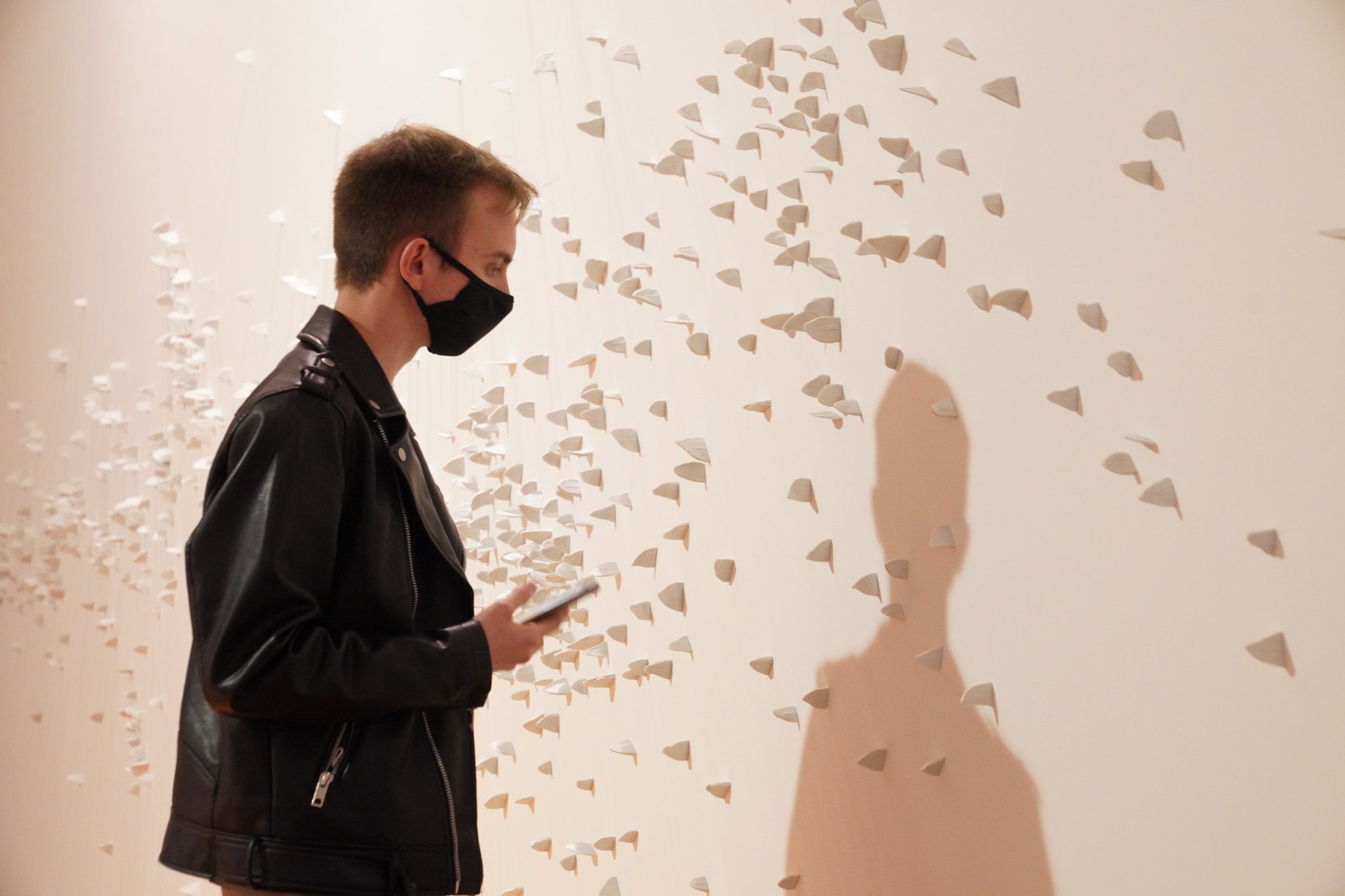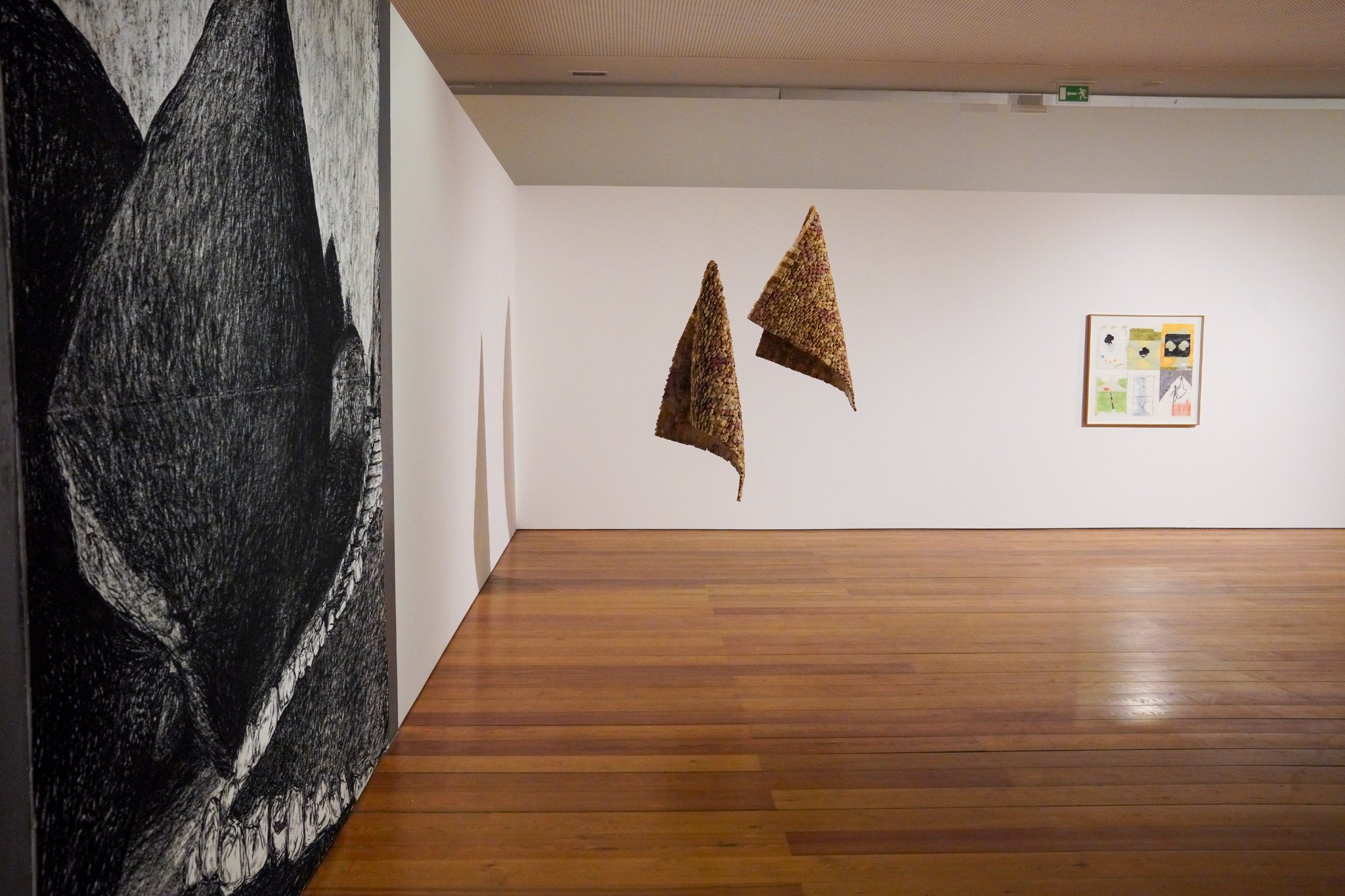AUTHOR: IVO MARTINS
EDITION: (Catalogue) Centro Cultural Vila Flor DATE: April 2022
In the global world where we now live in everything is too small and too mutant, everything is at the same time too close and too far away; choices and duties are everybody’s responsibility instead of being mere statutory rules. The new path to humanity must project itself in the future, that great unknown which surprises and limits the individual because, being unpredictable, the future compels us to invent new solutions to our collective identity. Likewise, the path of a single life, its main ambition, its ultimate destiny, may only be beneficially achieved, while at the same time preserving its future viability, if each person, supported by more or less technology, is granted the conditions to engage in an effort of individual recognition and collective integration – by knowing him or herself through the Other, thereby allowing him or herself to establish a responsible connection with the community, capable of forcing us to think collectively about what we share with one another.
It is in such a world that Campanice are building up, with a sophisticated sense of survival, their work. They are a collective of nomadic and chameleonic artists who transform their drifts into strategies of intervention that they use in order to probe and map their surrounding environments. These artists form a group which is in itself the foundation of the work, brought forth by an engagement with a sort of expeditionary prospection of the future. They assemble around individual observations, later unified in a collective dimension that connects them to the local realities of the territories where they interact. In this process they either isolate themselves in their peculiar individuality or gather around spontaneous associations of ideas, therefore revealing a culture of equality, cooperation and liberty within the collective. When we analyze the way how they create we understand that their members share a life project: they are not mere provocative iconoclasts nor utopian militants, because they recognize that the era of great utopias belongs to the past; on the contrary, they seem aware of the fact that, in the contemporary world, to become an artist requires the ability to avoid the power of bureaucratic machines. When Campanice declare that they want to discover how to “plant a rock”, what they are actually saying is that they prefer not to participate instead of being part of something: that they are more interested in incentivizing diversity than in competing; that even the most irrelevant things are important.
In the context of this art collective nothing is pre-determined, even if discourses are symbolically articulated, even if diagrams or annotations engraved in their notebooks are secondary elements of their work. However, the logics behind the group’s way of functioning presupposes that nothing is susceptible of being captured in language because if art was to be imprisoned inside the golden cage of writing, the beauty of its confabulations and metaphors would be forever lost. Campanice’s works always express a collective and tolerant form of interior relationship which is only solid because it was deepened through experience. When their members get together to create, the general sum of its several creators is bigger and richer than the quantification of the parts, and each piece reflects that strange accountability. Inside this group everything is potentially contagious and influential, and each work leaves behind a trace of questions about the circumstances surrounding its birth. Those vibrations are the natural result of a creative activity that inaugurates a universe of interrogations belonging to the realm of borderless subjectivity.
Nowadays, art is often perceived as an abyss of both visual and sound sources, a necromantic space where dead images wander around the land of the living. When we are confronted with dangerous zones of comprehension such as those built by Campanice, the fields of no-return assimilation generate libertarian experiences, mixed feelings of freedom and submission which can be either intense and active or, on the contrary, quite lethargic and impotent. We all know that there is no such thing as free-will, and that artists are also the victims of their own circumstances; that, in the end, we are all the product of contingencies and daily routines which follow our actions like the shadows of compulsion. Such shadows are not, however, mere loose passions whose uncontrollable force could drag the observer to the abyss of excessive freedom. In nobody’s land, as in the case of Campanice’s plantation of a rock, each creative act becomes the denial of itself, therefore demanding from the observer, the Other without whom art would be a mere simulacrum, a notion of some sort of limit.
TRANSLATION: MANUEL JOÃO NETO



